Top Rankings
Triopia CUSD 27 School District ranks among the top 20% of public school district in Illinois for:
Category
Attribute
Math Proficiency
Highest math proficiency (Top 20%)
Science Proficiency
Highest science proficiency (Top 20%)
Student Attention
Lowest student:teacher ratio (Top 1%)
For the 2025 school year, there is 1 public preschool serving 205 students in Triopia CUSD 27 School District. This district's average pre testing ranking is 9/10, which is in the top 20% of public pre schools in Illinois.
Public Preschool in Triopia CUSD 27 School District have an average math proficiency score of 42% (versus the Illinois public pre school average of 22%), and reading proficiency score of 42% (versus the 25% statewide average).
Minority enrollment is 3% of the student body (majority Hispanic), which is less than the Illinois public preschool average of 58% (majority Hispanic).
Overview
This School District
This State (IL)
# Schools
2 Schools
1,387 Schools
# Students
392 Students
512,005 Students
# Teachers
35 Teachers
38,167 Teachers
Student : Teacher Ratio
11:1
11:1
District Rank
Triopia CUSD 27 School District, which is ranked within the top 50% of all 844 school districts in Illinois (based off of combined math and reading proficiency testing data) for the 2020-2021 school year.
The school district's graduation rate of 80% has decreased from 80-89% over five school years.
Overall District Rank
#267 out of 852 school districts
(Top 50%)
(Top 50%)
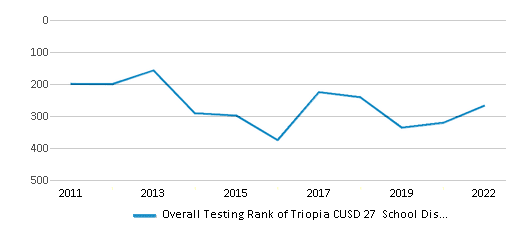
Math Test Scores (% Proficient)
(20-21)35-39%
28%
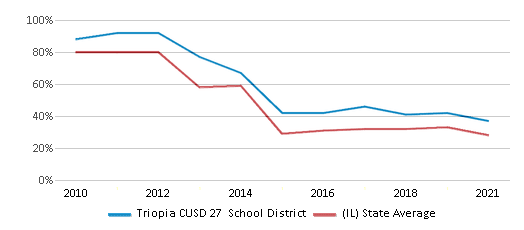
Reading/Language Arts Test Scores (% Proficient)
30%
30%
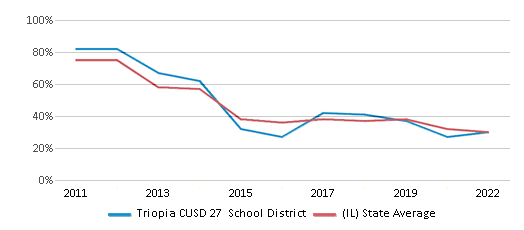
Science Test Scores (% Proficient)
70-74%
50%
Graduation Rate
≥80%
87%
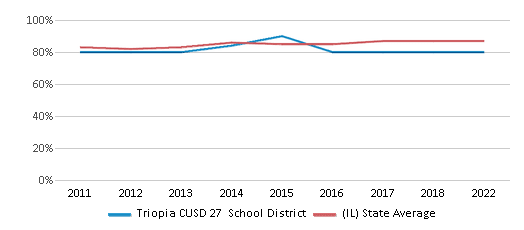
Students by Ethnicity:
Diversity Score
0.08
0.70
# American Indian Students
n/a
1,218 Students
% American Indian Students
n/a
n/a
# Asian Students
n/a
20,502 Students
% Asian Students
n/a
4%
# Hispanic Students
9 Students
162,757 Students
% Hispanic Students
2%
32%
# Black Students
n/a
94,002 Students
% Black Students
n/a
18%
# White Students
375 Students
213,555 Students
% White Students
96%
42%
# Hawaiian Students
n/a
447 Students
% Hawaiian Students
n/a
n/a
# Two or more races Students
8 Students
19,465 Students
% of Two or more races Students
2%
4%
Students by Grade:
# Students in PK Grade:
34
76,065
# Students in K Grade:
31
71,052
# Students in 1st Grade:
16
68,700
# Students in 2nd Grade:
23
66,332
# Students in 3rd Grade:
20
56,657
# Students in 4th Grade:
16
53,643
# Students in 5th Grade:
36
46,874
# Students in 6th Grade:
29
28,049
# Students in 7th Grade:
33
22,127
# Students in 8th Grade:
29
22,424
# Students in 9th Grade:
30
40
# Students in 10th Grade:
35
12
# Students in 11th Grade:
33
12
# Students in 12th Grade:
27
18
# Ungraded Students:
-
-
District Revenue and Spending
The revenue/student of $17,388 in this school district is less than the state median of $21,990. The school district revenue/student has stayed relatively flat over four school years.
The school district's spending/student of $14,628 is less than the state median of $21,244. The school district spending/student has stayed relatively flat over four school years.
Total Revenue
$7 MM
$41,381 MM
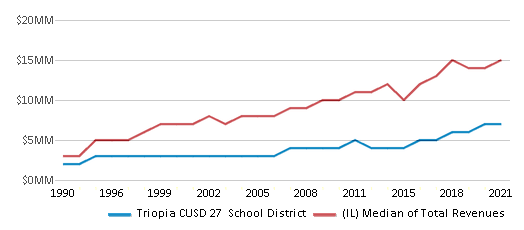
Spending
$6 MM
$39,976 MM
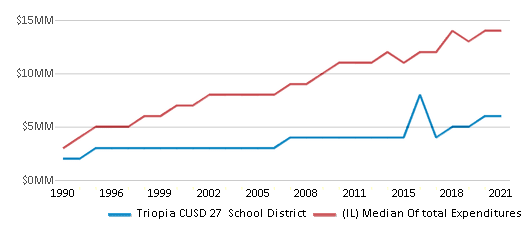
Revenue / Student
$17,388
$21,990
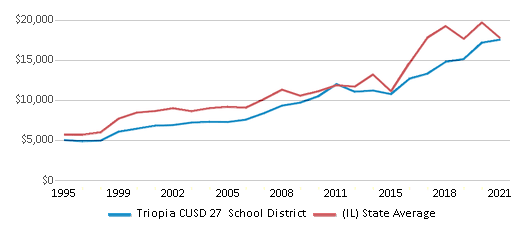
Spending / Student
$14,628
$21,244
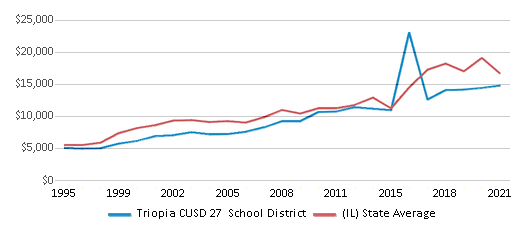
Best Triopia CUSD 27 School District Public Preschools (2025)
School
(Math and Reading Proficiency)
(Math and Reading Proficiency)
Location
Grades
Students
Rank: #11.
Triopia Grade School
Rank:
9/
Top 20%10
2206 Concord Arenzville Rd
Concord, IL 62631
(217) 457-2284
Concord, IL 62631
(217) 457-2284
Grades: PK-6
| 205 students
Recent Articles

Year-Round Or Traditional Schedule?
Which is more appropriate for your child? A year-round attendance schedule or traditional schedule? We look at the pros and cons.

Why You Should Encourage Your Child to Join a Sports Team
Participating in team sports has a great many benefits for children, there is no doubt. In this article you will learn what those benefits are.

White Students are Now the Minority in U.S. 九游体育s
Increasing birth rates among immigrant families from Asia and Central and South America, combined with lower birth rates among white families, means that for the first time in history, public school students in the United States are majority-minority. This shift in demographics poses difficulties for schools as they work to accommodate children of varying language abilities and socio-economic backgrounds.





